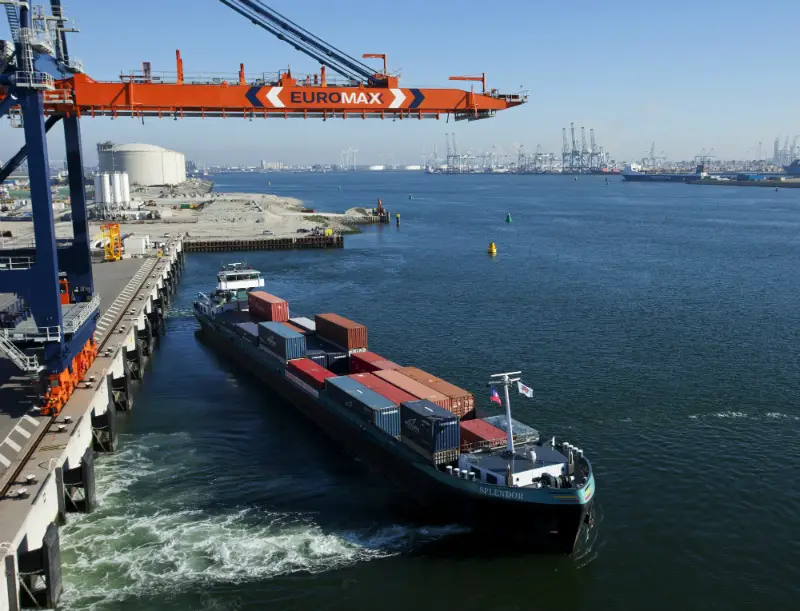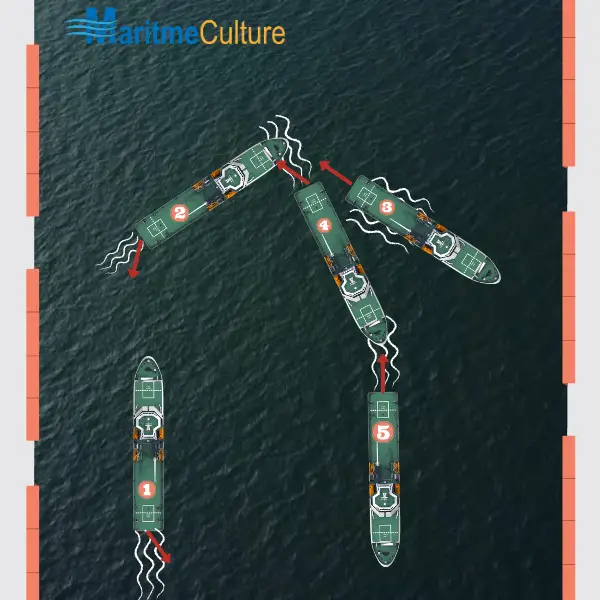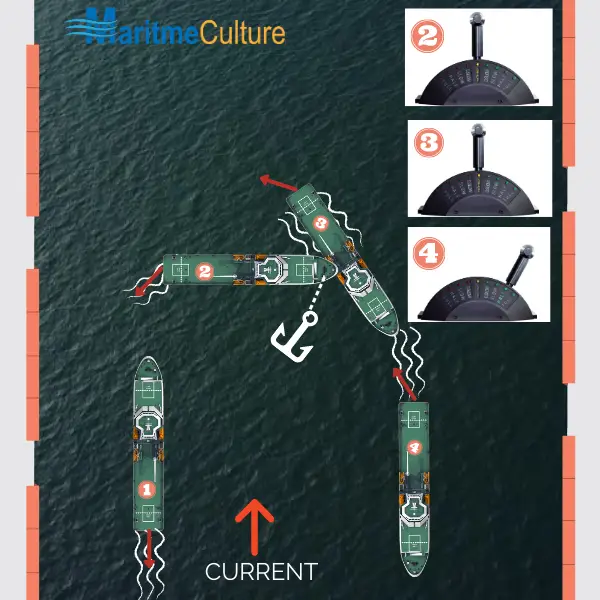The ship handling is like an art, that the captain of ship gain during his carrier.
We can not substitute the practical ship handling operation with the theory but have some more knowledge; it is better than nothing.
Ship handling theory is a vast topic, not only for the different types of manoeuvre possible on the sea but also for the “tools” available to make this manoeuvre.
Some example : (manoeuvring with a single right fixed propeller twin-screw vessels, ships with controllable pitch propellers, ships with tugs and without tugs, good weather or bad weather conditions prevailing, with the tide or without tide, etc.).
Of course, as many of the jobs, more practices will convert in more ability to handle the ship.

Consideration while doing ship handling
The master or the person who has the ship on his hand, have much consideration to take care.
The main elements to take into consideration while manoeuvring a ship are: the control of engines and the speed, helm and steering gear effecting rudder, bow trusted and stern thrust, anchors.
As you can understand, these are, internal considerations, internal effectsare under the control of the master, and his crew.
But anyway there are some external factors that the captain can not control.
This is the weather.
Some external factors to take into consideration during a ship handling are tide heights and times, depth of water and respective under keel clearance, objects like bridges, geographic obstructions as with narrows,and so on.
After some important consideration, now we take a look at the most used ship handling techniques to turn a big ship on a small space.
Turning short round (right hand fixed propeller)
Alter the ship’s head to move to the port side of the channel, as this would gain the the greatest advantage when operating astern from transverse thrust, during the turn.
- 1. Dead slow ahead on engines and order the helm hard to starboard.
- 2. Stop engines, wheel midships.
- 3. The vessel still moving ahead making headreach. Full astern, wheel amidships, until the vessel gathers sternway, then stop engines.
- The effect of transverse thrust would generate a tendency for the bow to move to starboard and the stern to move to port (with the bow of the ship in the centre of the channel, where the flow is the strongest the tide effect would tend to push the bow round to starboard).
- 4 & 5. Wheel hard to starboard, engines full ahead to achieve the reverse heading.

Snubbing round (tide current astern)
The main point of this manoeuvre is to turn the vessel where restricted sea room exists.
The turn employs the use of a single anchor and can be made turning to port or starboard. It is employed to turn the vessel to stem the tidal stream or can be used when berthing, leaving the anchor deployed to heave the vessel off the berth when clearing the berth.
- 1. Position the vessel on the port side of the channel, with the tide astern. Have the starboard anchor walked back, ready for deployment at short stay.
- 2. Helm should be placed hard to starboard, engines on stop. Let go the starboard anchor at position ‘2’, to a short stay.
- 3. Check the anchor cable and keep the anchor at short stay. The momentum on the vessel should carry the stern through 180° with the bow being held by the cable.
- 4. The helm should be placed hard to starboard and engines on half ahead to overcome the tidal effect. Engage the windlass gear and recover the anchor, having turned the ship’s head into stemming the tide.

When using the manoeuvre to turn off the berth and go alongside, the anchor cable would be paid out more to allow the vessel to close the berth. Once alongside, the cable would be walked back to the ‘up and down’ position so as not to obstruct the channel.
Read also: SPEED OF A SHIP
